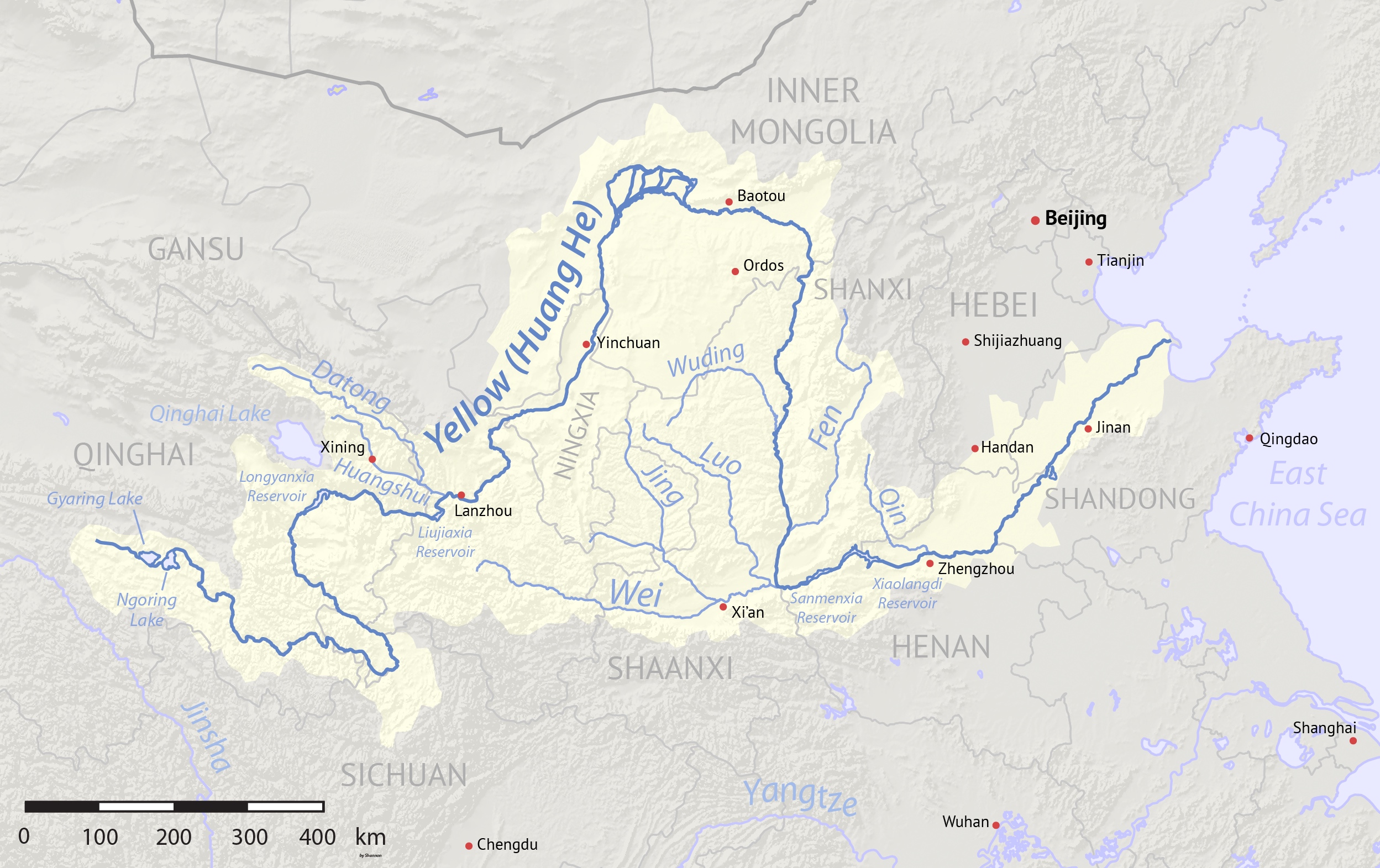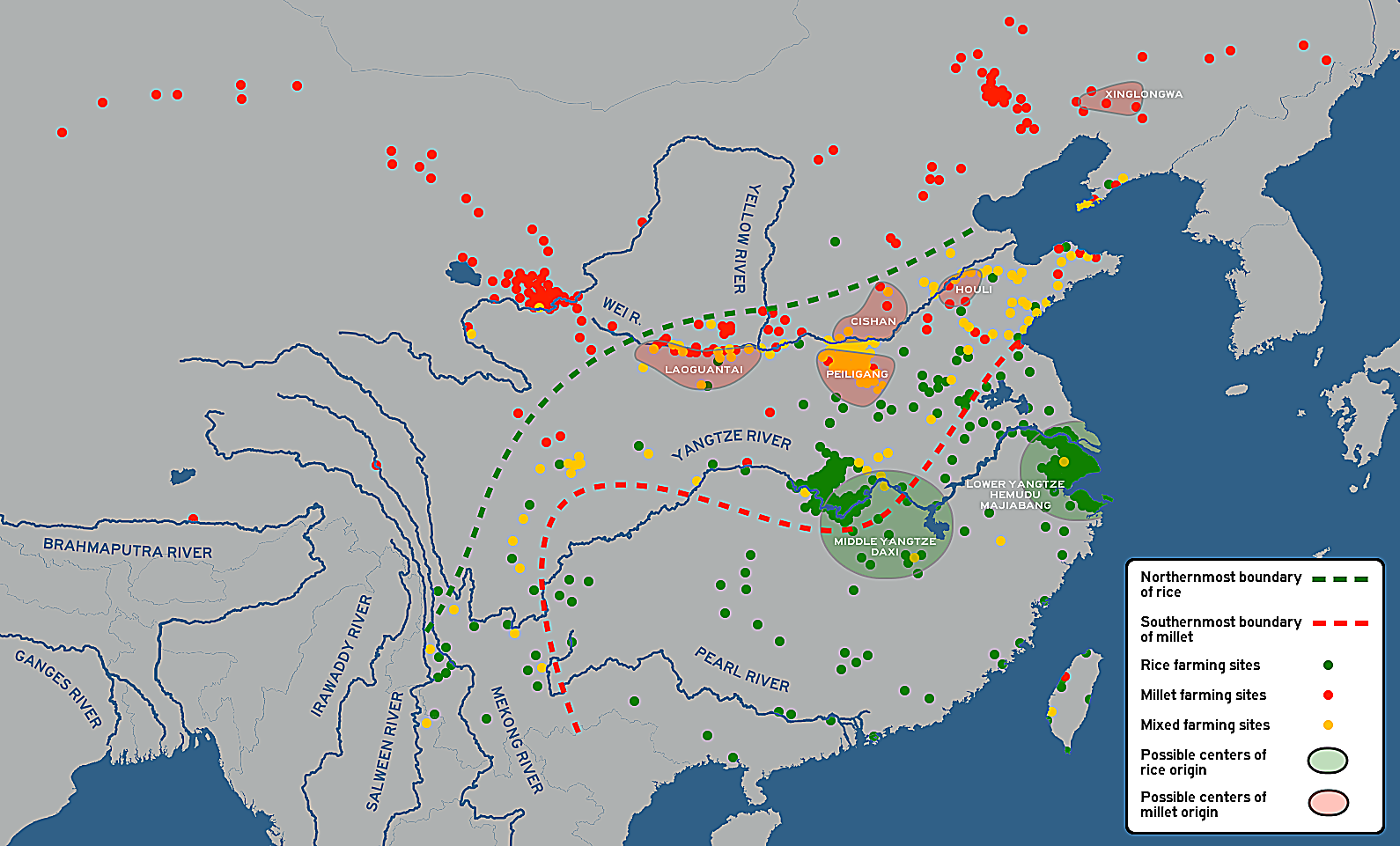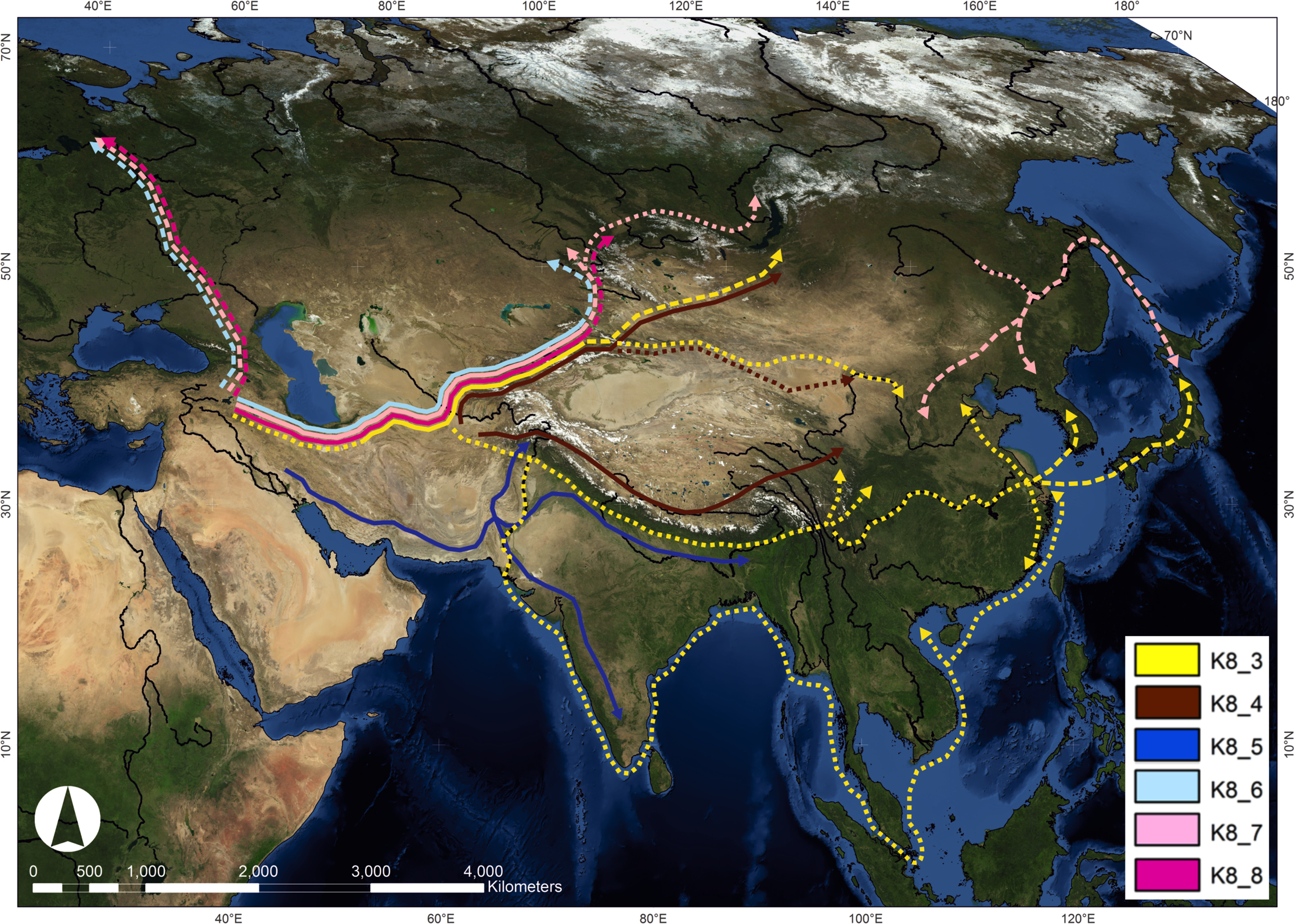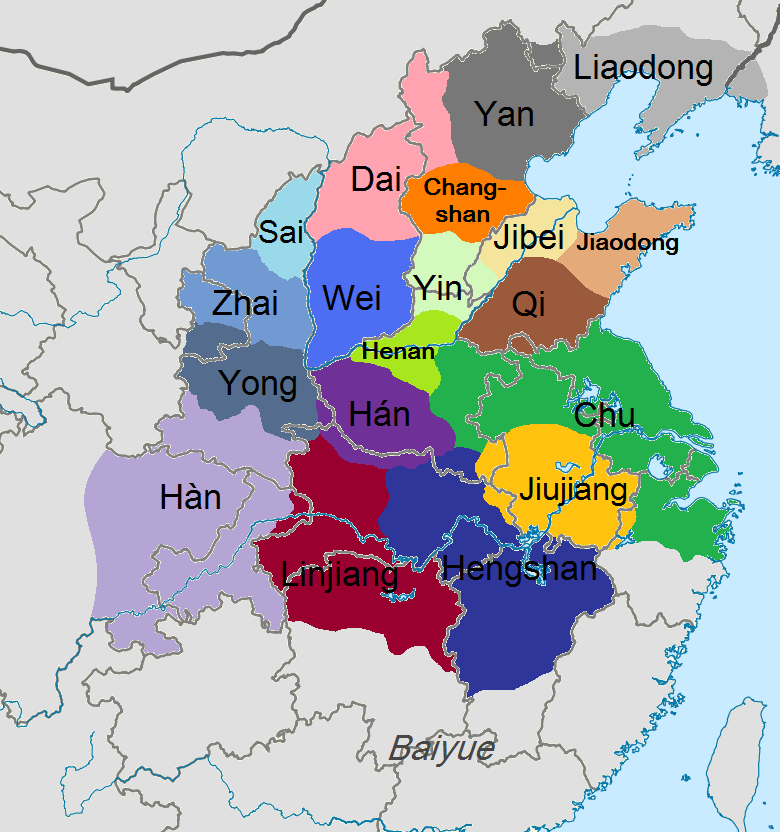This mod adds the Han China civilization to 0 A.D. Empires Ascendant.
The Han dynasty (206 BC – AD 220) was the second imperial dynasty of China, preceded by the Qin dynasty (221–207 BC) and succeeded by the Three Kingdoms period (AD 220–280). It is considered a golden age in Chinese history, and China made significant progress in arts and sciences during the Han period. The core of the Han empire was around the Wei River, and the Han capital was Chang'an, very close to the Qin capital Xianyang (both are now part of Xi'an, Shaanxi).
- melee weapons:
- gē (dagger-axe pole arm)
- qiāng (spear)
- jiàn (double-edged sword)
- dāo (single-edged sabre)
- ranged weapons:
- longbow
- composite bow
- crossbow
(Return to table of contents.)
- Village phase:
- female citizen
- infantry spearman (qiang)
- infantry archer (longbow)
- cavalry spearman (qiang)
- Town phase:
- healer
- minister
- trader (needs Bactrian camel actor)
- infantry swordsman (dāo)
- infantry crossbowman (crossbow)
- cavalry swordsman (dāo)
- cavalry archer (composite bow)
- City phase:
- champion infantry swordsman (jiàn)
- champion infantry archer (composite bow)
- champion cavalry spearman (qiang)
- champion chariot archer (composite bow)
- shoushe (bolt-shooter)
- mangonel (stone-thrower)
- siege tower
(Return to table of contents.)
- Team bonus:
- Civilization bonuses:
- Technologies:
- Structures:
- Heroes:
(Return to table of contents.)
China proper consists of two geographically distinct regions:
- Northern China broadly corresponds to the Huang He (Yellow River) and Bohai Sea area.
- Southern China broadly corresponds to the (Yangtze River) area.
Throughout history Northern China tended to be military dominant, Southern China economically. Millet cultivation originated in Northern China, rice cultivation in Southern China. Wheat and barley originated in the Near East, but reached China in the 3rd millennium BC (source).
Ancient Chinese history can be subdivided into the following periods:
- Xia dynasty (c. 2070–1600 BC), pseudo-legendary.
- Shang (Shāngcháo) or Yin (Yīndài) dynasty (c. 1600–1046 BC, i.e. late Bronze Age), first attested Chinese state, archaeolically and historically. Also the earliest known Chinese writing (oracle bone inscriptions).
- Zhou (Zhōu) dynasty (c. 1046–256 BC, i.e. Iron Age), subdivided in:
- Western Zhou (c. 1046–771 BC)
- Eastern Zhou (c. 771–256 BC)
- Spring and Autumn period (c. 771–481 or 403 BC), first archaeological evidence of handheld crossbows (cast bronze crossbow locks).
- Warring States period (c. 481 or 403–221 BC), massed infantry equipped with crossbows became a dominant army feature.
The Qin king Zheng (Yíng Zhèng or Zhào Zhèng, 259–210 BC) was the first to unify all of China, in 221 BC, became the first Chinese emperor (Qin Shi Huang), and founded the Qin dynasty (Qíncháo, 221–206 BC). During his reign the writing system, weights, measures, and currency were all standardized throughout China. Qin Shi Huang is probably best known though for starting the Great Wall of China and for his enormous mausoleum containing the Terracotta Army.
After his death (210 BC) a weak heir was placed on the throne, heavily depending on two advisors competing for influence. Revolts broke ought throughout the empire almost immediately. The rebel leader Xiang Yu (232–202 BC) of Chu deposed the Qin in 206 BC and split the empire into eighteen kingdoms. The peasant-born rebel Liu Bang (256–195 BC) was made king of the new kingdom of Han. What followed was the so-called Chu–Han Contention (206–202 BC), a four-year interregnum and civil war between Xiang Yu and Liu Bang. Liu Bang won decisively in 202 BC, became emperor, and founded the Han dynasty. He subsequently invaded the Xiongnu territory, but was defeated (200 BC), instead sent a diplomat (198 BC), and reached a peaceful solution.










